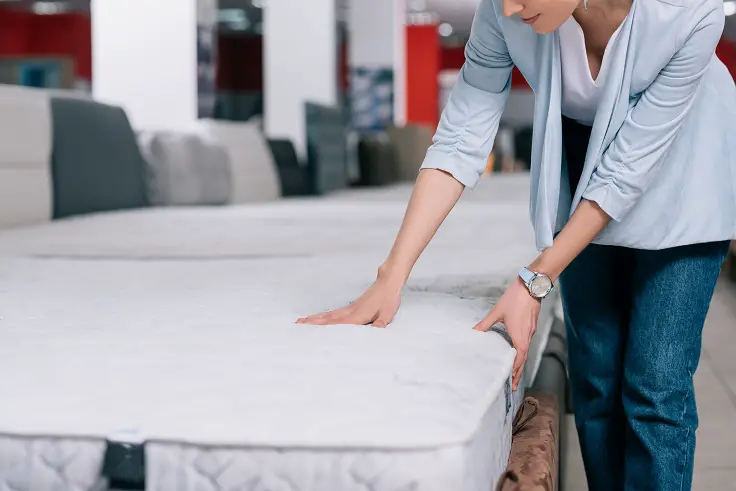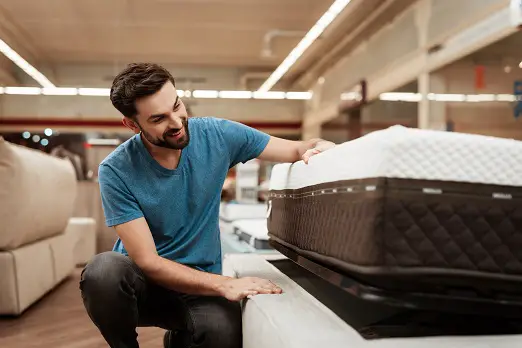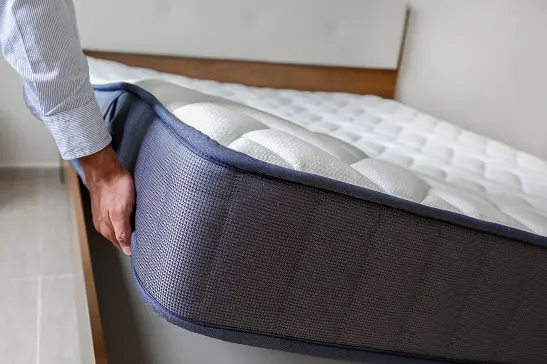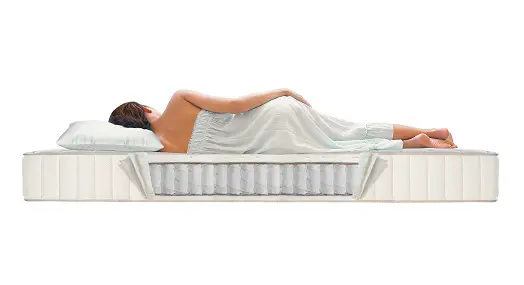Buying a mattress that’s good for an athlete?
You’ve come to the right place!
After a particularly hard game or workout, many athletes want nothing more than a good night’s sleep, and choosing the right mattress can mean the difference between a swift recovery and several days of aches and pains.
Well-rested players are more reflexive, quicker, and able to perform for a longer period than those who are sleep-deprived. For these reasons, the mattress choice of an athlete is extremely important.
But how do you choose the best mattress for an athlete?
Keep reading to find out!
Why Do Athletes Need a Special Mattress?
Numerous studies have identified a positive correlation between healthy sleeping habits and powerful athletic performance. Well-rested players are stronger, faster, more accurate, and have a quicker reaction time than those who don’t get enough sleep.
Proper sleep can also add to exercise routines, allowing athletes to boost strength, increase endurance, and build muscle more effectively. Meanwhile, sleep-deprived athletes usually pay the price mentally, emotionally, and physically.
Generally, athletes need more sleep than non-athlete individuals, especially before and after long, athletic events.
An average person needs around 7 to 9 hours of sleep every night to function properly the next day, while athletes need approximately 10 hours of sleep if they’re competing or training regularly.
Similarly, adolescent athletes are encouraged to sleep for at least 9 hours every night during their playing seasons so that they get the full benefits of sleep.
A mattress can also affect the sleep routines and habits of athletes. Some mattresses are better able to accommodate athletes than others. This is because they cushion sensitive areas, like the lower back, hips, neck, and shoulders, and align the spine, pelvis, and head, reducing pressure points over the body.
Athletes also need special mattresses because of temperature neutrality, as mattresses that sleep very hot can negatively affect physical recovery. And since most athletes have larger-than-average bodies, recovery mattresses that support heavier and taller sleepers are typically the best option.
What’s In This Buying Guide
In this guide, we review some of the best mattresses for athletes available today. We also explain the different types of beds for athletes in the market and the features athletes should consider before making a purchase.
Lastly, we answer some of the most frequently asked questions about athlete beds, so you can get the rest you need.
If you’re not in the market for a mattress, but only need a mattress topper, make sure you go through our reviews of the best Novaform Mattress Toppers before making your decision.
The Best Mattress for Athletes
- Best Overall: Bear Original
- Best for Heavier Athletes: Bear Hybrid
- Best Cooling Mattress: Purple Hybrid Mattress
- Best Supportive Mattress: Zoma Mattress
- Best Innerspring: Saatva Classic Mattress
| Product | Award | Type | Thickness | Warranty | Sleep Trial | No. of Layers | No. of sizes |
|---|---|---|---|---|---|---|---|
Bear Original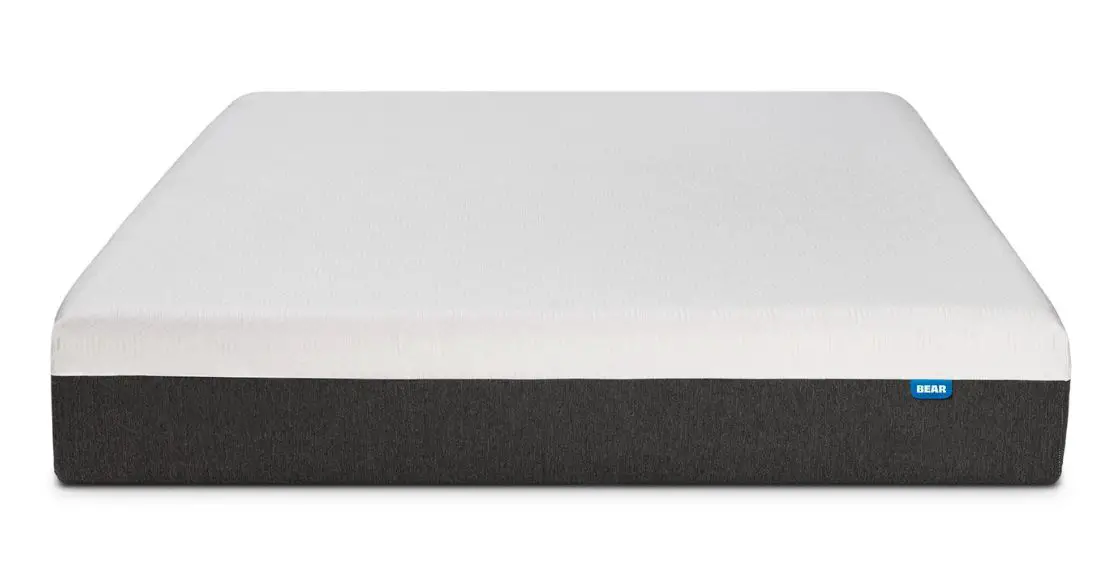 | Best Overall | Memory Foam | 10” | 10 years | Yes (100 Nights) | 4 | 6 |
Bear Hybrid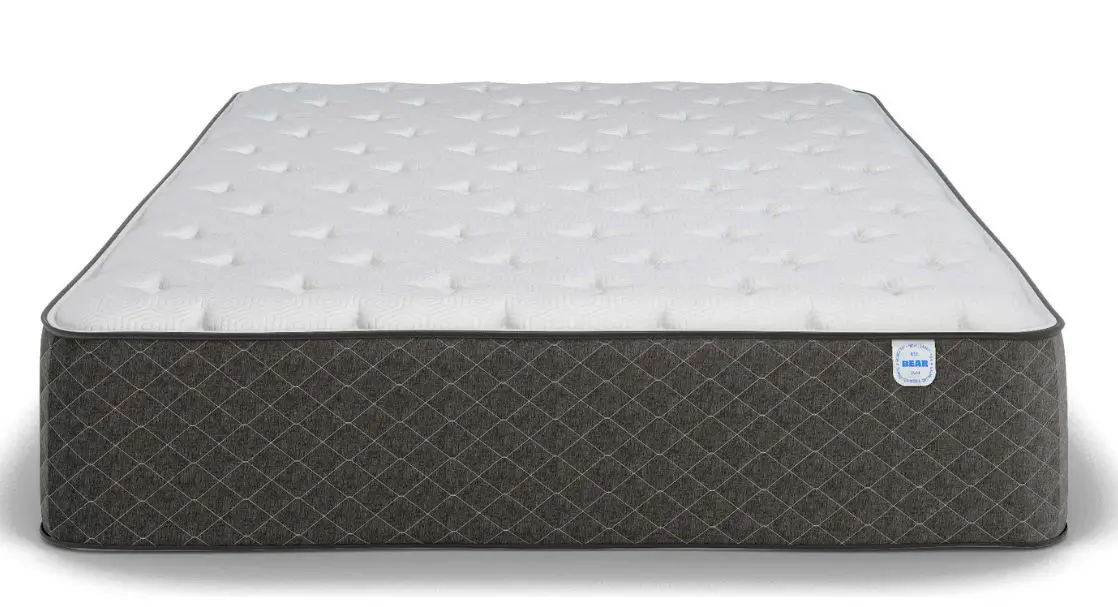 | Best for Heavier Athletes | Hybrid | 14” | 20 years | Yes (100 Nights) | 6 | 6 |
Purple Hybrid Mattress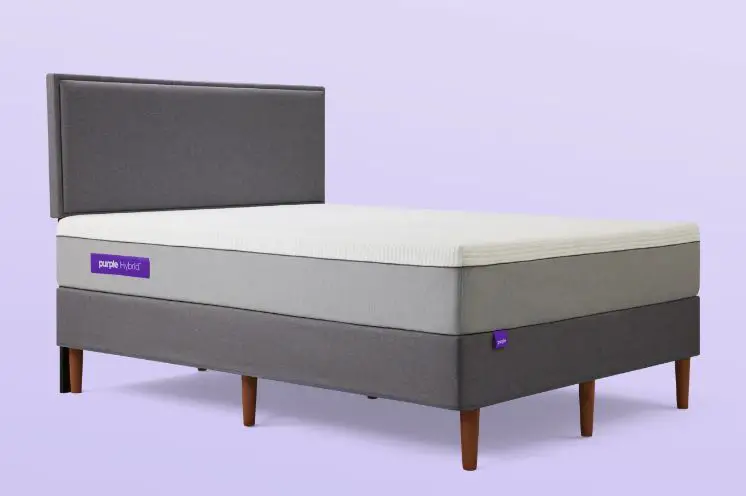 | Best Cooling Mattress | Hybrid | 11” | 10 years | Yes (100 Nights) | 4 | 6 |
Zoma Mattress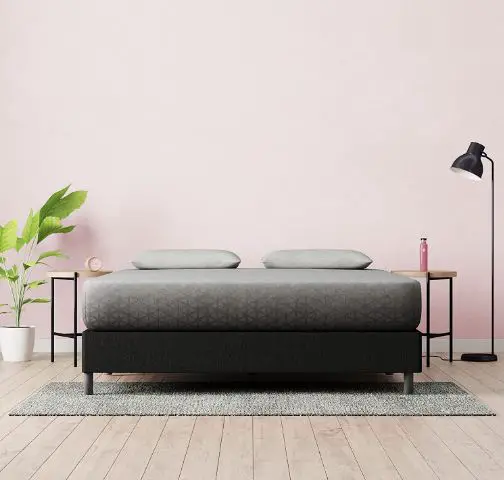 link goes to Amazon.com | Best Supportive Mattress | Memory Foam | 12” | 10 years | Yes (100 Nights) | 4 | 7 |
Saatva Classic Mattress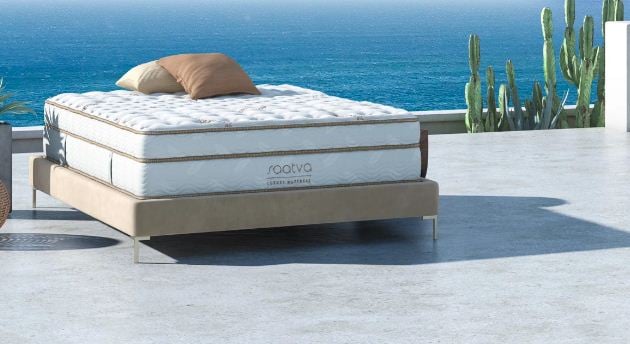 | Best Innerspring | Innerspring | 11.5” and 14.5” | 15 years | Yes (180 Nights) | 5 | 8 |
1. Best Overall: Bear Original
Boasting a pressure-relieving memory foam and a Celliant fabric, the Bear Original’s innovative design is especially beneficial for athletes.
The model offers a ‘Firm’ feel but still moderately conforms to your body, making it perfect for athletes with different comfort preferences and body types.
Pros
- Breathable Celliant fabric cover helps improve athletic performance
- Cooling graphite-gel memory foam gets rid of unwanted body heat
- High-density support foam ensures durability and longevity
- Responsive transition foam provides pressure relief and balanced support
- Environment-friendly design
- Little to no smell
Cons
- Sizing is a bit off
- Lacks edge support
Our Review
We found the Bear Original to be the best mattress for athletes primarily because of its Celliant cover. The Celliant’s Infrared Yarn Technology uses your body’s energy to speed up the recovery process and promote overall health and well-being.
This Bear model boasts a graphite-gel memory foam that’s 7 times cooler than other standard memory foam mattresses. It also comes with a quick response foam that helps increase pressure point relief and enhance spinal alignment.
It also features a high-density support foam, making the mattress perfect for all sizes and weights. The supportive and responsive foam conforms to the shape of your body and relieves pressure off of your hips, shoulder, and back in every sleep position.
The Bear Original’s open-cell construction further ensures better airflow and keeps you cool while you sleep, allowing you to rest peacefully at your preferred temperature.
This unit is also UL GREENGUARD Gold Certified for low emissions. It meets some of the world’s strictest, third-party emission standards for pollutants and chemical exposure, such as formaldehyde, phthalates, and VOCs.
The mattress uses a water-based bonding solution and CertiPUR-US-certified foams as well, making it extremely environment-friendly.
Lastly, it comes with a 10-year limited warranty and a 100-night sleep trial, which perfectly showcases the company’s confidence in its product.
2. Best for Heavier Athletes: Bear Hybrid
The Bear Hybrid is perfect for bigger and heavier athletes who weigh more than 230 pounds. Its thick hybrid construction provides excellent support across the surface and the sides, while its foam comfort layers offer much-needed pressure relief.
Due to its pocketed coil core and Celliant fabric cover, the mattress sleeps incredibly cool as well.
Pros
- Hand-quilted Celliant fiber top improves your overall health and well-being
- Hypersoft cooling-gel foam provides a cool and comfortable feeling every night
- Premium comfort foam conforms to all sleep positions and body types
- Edge coil system ensures excellent edge support alignment
- Responsive transition foam offers better pressure relief and airflow
Cons
- Not ideal for athletes who need an especially firm or soft bed
Our Review
The Bear Hybrid perfectly combines memory foam and springs for luxurious cooling and comfort, and provides up to 4 times more pressure relief by conforming to the shape of your body.
The innerspring coils remove heat 28% more efficiently than traditional memory foam mattresses, while the cooling gel memory foam creates a temperature-regulating, heat-dissipating system that promotes better airflow. Both these features ensure that you enjoy a cooler night’s sleep.
However, its sturdy construction is what makes the Bear Hybrid the best mattress for bodybuilders and other heavy-weight athletes. Boasting memory foam and polyfoam comfort layers, the unit conforms closely to your body and improves spinal alignment.
And since the comfort layers are 5 inches thick, this Bear model sleeps quieter and isolates motion transfer better than other hybrid models.
The Bear Hybrid also boasts strong edge coils that provide enhanced edge support along the entire mattress.
With CertiPUR-US and Greenguard Gold Certifications, it’s extremely environment-friendly as well and meets some of the most comprehensive and rigorous standards for low emissions of VOCs in indoor air.
Lastly, it comes with a 20-year warranty and a 100-night sleep trial.
3. Best Cooling Mattress: Purple Hybrid Mattress
The Purple Hybrid mattress is a unique combination of responsive support coils, cushioning transition foam, and the company’s innovative gel grid. The pocketed coils boost the durability of the mattress, allow better airflow, and offer a more dynamic response than foam beds.
The unit also earns its ‘Best Cooling Mattress’ award because of its interior coils, which work perfectly with the built-in air channels of the GelFlex Grid to circulate air more easily.
Plus, the GelFlex fabric itself doesn’t absorb any heat and ensures that you stay cool throughout the night.
Pros
- Comes with a 100-night trial and a 10-year warranty
- Cradles pressure points like the shoulders and hips
- Breathable woven side panels boost airflow
- Clear Air GOLD Certified
- Boasts a quality noise-reducing fabric
Cons
- Expensive than other models
Our Review
The Purple Hybrid Mattress perfectly combines excellent cooling technology with durable support on a coil-support base. Its 2” GelFlex Grid is made with hyper-elastic, temperature-neutral GelFlex material.
This soft material conforms to pressure points like your shoulders and hips while still providing adequate support to the rest of your body.
The Grid also adapts to your sleeping position and adjusts back into place as you move overnight. The unit’s individually wrapped stainless steel coils further work with the Grid to provide dynamic support and pressure relief.
The Purple Hybrid Mattress boasts a premium StretchMax cover as well, which allows you to feel all the benefits of the Purple Grid and ensures that you enjoy a good night’s sleep.
4. Best Supportive Mattress: Zoma Mattress
The Zoma Mattress is a high-quality mattress designed to conform to the shape of your body, relieve pain, and stay cool throughout the night.
It boasts a zoned memory foam comfort layer that offers additional support around your midsection while contouring to the rest of your body, making it the best supportive mattress available today.
The mattress has several other strengths as well, including consistent pressure relief and strong motion isolation.
Pros
- Soft and contouring cooling gel memory foam wicks away warmth
- Responsive layer offers a bouncier feel
- Recovery-enhancing design helps relieve pains, stiffness, and aches
- Sturdy base layer ensures healthy spinal alignment
- Gel infusions combat moisture and heat
Cons
- Edge support has room for improvement
Our Review
Backed by years of design, research, and testing, the Zoma Mattress offers enhanced rejuvenation and a comfortable sleeping experience for athletes with demanding lifestyles.
Its contouring Triangulex gel memory foam conforms to the shape of your body to alleviate pain, remove heat, and ensure deep, restful sleep.
Along with being comfortable and soft, the mattress’ foam layers boast a recovery-enhancing design that relieves pains, soreness, aches, and stiffness by promoting better sleep postures.
While most memory mattresses offer an uncomfortable ‘sinking’ or ‘quicksand’ feel, this is not a problem with the Zoma Mattress. This unit comes with a highly responsive Reactiv layer that ensures you get a bouncy feel for years to come.
This Zoma model is also ideal for hot sleepers because of its head-to-toe cooling sensation. Its gel infusions combat moisture and heat, while its ventilated AirCloth cover allows excess heat to escape easily, providing a cooler, more comfortable sleep.
For more information, you can read our in-depth Zoma review here.
5. Best Innerspring: Saatva Classic Mattress
Not all athletes prefer a foam mattress and might like the classic feel of an innerspring mattress instead. Athletes who feel like going a bit old school should definitely consider the Saatva Classic Mattress when making their purchase.
Pros
- Comes with a comfortable 3” Euro pillow top
- Durable dual-coil design conforms to the shape of your body and promotes better airflow
- Does not sag over time
- Breathable organic cotton cover
- Available in 3 firmness options
- Lumbar zone technology helps alleviate back pain
- CertiPUR-US certified
Cons
- Does not offer much motion isolation
Our Review
Most innerspring mattresses feature thin polyfoam comfort layers that offer minimal contouring and only improve spinal alignment to a limited extent. However, the Saatva Classic Mattress is a notable exception.
Boasting thick comfort layers and unique coil-on-coil construction, the unit provides exceptional pain relief and comfort for athletes.
It features pocketed coil, memory foam, and polyfoam comfort layers that provide excellent support to the athlete’s body and offer sturdy reinforcement to the entire mattress.
The coil layers also promote good air circulation, allowing you to sleep cool throughout the night. The Saatva comes in 3 firmness options, making it suitable for most athletes, regardless of their preferred sleeping position or weight.
Lastly, the mattress comes with a 15-year warranty and a 180-night sleep trial, so you don’t have to worry about making the wrong decision.
Mattress Types to Consider for Athletes
While almost every type of mattress works for athletes, the choice ultimately comes down to what they personally prefer.
For example, players who like a softer and slower-moving mattress should go for memory foam, while those who prefer a bouncier mattress should choose a unit with latex in its comfort layer.
Some of the best mattress types for athletes include:
Hybrid
Hybrid mattresses are designed with a pocketed coil support core and have at least 2 inches of latex or memory foam in the comfort layer. Their thicker construction also makes them a bit pricier than average.
Comfort Layer: Along with their latex and memory foam components, the comfort layer of hybrid mattresses might also feature layers of steel minicoils or polyfoam.
Support Core: Pocketed coils are wrapped in fabric casings and are usually thinner than other coil types. The support core of many hybrid mattresses also features extra layers of high-density polyfoam.
Pros
- Conforms closely to your body
- Offers better pressure relief compared to traditional innerspring mattresses
- Available in several firmness settings
- Typically provides good motion isolation
Cons
- Absorbs body heat and usually sleeps hotter than innerspring with polyfoam layers
- Units with lower firmness ratings might be more susceptible to sagging
- Might produce some squeaking and creaking noises
Innerspring
Innerspring mattresses are one of the most popular mattresses sold today, accounting for up to two-thirds of total industry sales.
Their name comes from the steel coils present in their support core. These coils are uniformly spaced to ensure proper weight distribution and are usually supported with high-density polyfoam layers.
Generally, innerspring mattresses have a medium to low price range.
Comfort Layer: Most innerspring mattresses have a comfort system primarily made of polyfoam layers. It might also feature thin latex or memory foam layers, but these materials are more commonly used in hybrids.
Support Core: Innersprings are designed with 4 types of steel coils, differing in terms of thickness, price-point, gauge, and shape.
Pros
- Available in several firmness options
- Absorb minimal body heat and usually sleep cooler than other types
- Open support core design ensures better air circulation
Cons
- More susceptible to sagging
- Lose their supportive features relatively quickly
- Lack contouring materials, so don’t conform to your body
- Squeaking coils and other components make them a bit loud
- Isolate motion to a very limited extent
Latex
All-latex mattresses are extremely durable and last longer than average. As a result, they’re usually more expensive than other types.
Mattresses that feature both foam and latex components are typically more susceptible to deterioration and sagging, so they are cheaper than all-latex ones.
Comfort Layer: Latex mattresses have a comfort system that primarily features latex layers. Some models also use polyfoam or memory layers, while some only feature latex.
Support Core: Some latex beds boast supports cores completely constructed with latex, while some have support layers made from high-density polyfoam.
Pros
- Conform closely to your body
- Perfectly targets pressure points located in sensitive areas
- Available in a wide variety of firmness settings
- Suitable for almost every body weight and sleep position
- Offer better motion isolation than other types
- Fairly quiet
Cons
- Latex beds with foam components usually retain high levels of body heat, so they might not be ideal for athletes who sleep warm or hot.
- Mattresses featuring both foam and latex provide below-average to average support and are more susceptible to sagging.
Airbed
The customizable air chambers in airbeds offer adjustable support and firmness settings. You can toggle these settings manually or remotely, according to the design.
Generally, airbeds are the priciest mattresses available today.
Comfort Layer: Most airbeds have thin comfort layers constructed with memory foam or polyfoam, but some high-end units also boast latex layers.
Support Core: Airbeds have a support core made up of at least 2 individual air chambers, but some higher-end models have as many as 6. Most designs have electrical outlets for the adjustable settings, while some newer units allow you to customize firmness settings via an app.
Pros
- Adjustable controls make them ideal for most athletes, regardless of their support and firmness preferences
- Conform closely to the body
- Provide a contoured fit that helps alleviate pressure points and align the spine.
- Significantly isolate and absorb motion
Cons
- Barometric pressure, sleeper weight, and room temperature can affect the settings
- Running air pumps and squeaking sounds on the surface produce a lot of noise
- Units with thin comfort layers might sleep excessively cold
Memory Foam
Viscoelastic polyfoam or memory foam is essentially a polyurethane-based foam. When you lie on the bed, it sinks and offers a contoured fit to your body. Once cool, the foam reverts to its original, flattened shape. Memory foam mattresses are usually cheaper than other types.
Comfort Layer: The comfort system of memory foam mattresses has at least one memory foam layer. Some models might also feature additional standard polyfoam layers for extra stability.
Support Core: Most memory foam mattresses boast support cores made with high-density polyfoam. This material is able to withstand your weight while maintaining an even surface at the same time. Mattresses made completely of memory foam are not as supportive and just result in you sinking too deeply into them.
Pros
- Conform very closely to your body
- Help align your spine and alleviate pressure and pain in the shoulders, hips, neck, and lower back
- Available in different firmness settings, making them perfect for athletes with different position preferences and weights
- Offer better-than-average motion isolation
- Produce minimal noise when bearing weight
Cons
- Usually sags with age and loses its supportive properties
- Absorb high levels of body heat, so they might not be ideal for athletes who sleep warm or hot
What to Look for When Buying a Mattress for an Athlete
With such a wide range of mattresses available today, choosing the best one for athletes is next to impossible.
While there’s no one perfect mattress for all athletes and the decision depends largely on one’s preferences, some key factors that every athlete should consider before making a purchase are:
The Firmness
Most people have particular firmness preferences, and the same thing applies to athletes. Some athletes prefer a soft mattress, while some just love the feel of a firmer model.
Firmness preferences usually depend on 2 individual factors: sleep position and body weight.
Since most athletes have above-average weights, they prefer mattresses that range from 6 (Medium Firm) to 8 (Very Firm). Heavier sleepers might sink too deeply if the mattress is too soft, resulting in discomfort and added pressure.
Athletes must also consider their sleep position.
Those who have a habit of sleeping on their side don’t prefer something too firm because it causes pain in their shoulders, hips, and joints.
On the other hand, a softer mattress is not ideal for someone who sleeps on their stomach, as their hips sink in too far, resulting in significant lower back pain.
Pressure Relief
Pressure relief is essential for athletes who view sleep as a time for restoration and healing. If athlete recovery bedding is made without pressure relief in mind, they might experience pain at pressure points, like the shoulders, hips, and knees.
Recovery mattresses that are too soft or too firm usually don’t offer good pressure relief. It’s better to go for materials like latex and high-density foam, as they conform closely to athletes’ bodies, creating a contoured impression that targets pressure points and aligns the spine.
Spine Alignment
Everyone needs to have a mattress that ensures neutral spine alignment, but this factor is even more essential for athletes who regularly put a strain on their bodies during races, meets, and workouts.
Athletic beds that don’t offer proper support also sag over time and make the sleep surface uneven. This results in pressure and pain along the body. So, stomach and side sleepers should choose a mattress that offers sufficient support.
Cooling
Whether you’re an athlete or not, it’s never comfortable to sleep hot at night. However, some mattress types, particularly those that feature memory foam, retain body heat and make you overheat.
It’s better for athletes to choose a mattress that stimulates cooling so they can recover quickly and enjoy a good night’s sleep. It’s also advisable to opt for a unit with cooling features, like Phase Change Material (PCM).
However, if athletes prefer memory foam, they should ensure that their model is infused with graphite, gel, or other cooling components.
Motion Isolation
Some athletic beds are designed to absorb motion when someone changes positions or gets up and isolate it to specific parts of the mattress. This feature is especially beneficial for people who share a bed.
Mattresses that provide minimal motion isolation are not suitable for light sleepers, as any motion across the sleeping surface will disrupt their sleep.
Support
Mattress support depends on the support core or the layers of material present below the comfort system. It’s important to choose a mattress with a support core that withstands your weight by creating an even sleeping surface that keeps your spine straight.
Durability
The average mattress has a life of 7 years, regardless of its thickness, material composition, and firmness. However, different factors affect the lifespan of individual models, making some units more durable and long-lasting than others.
Hard or Soft
Mattresses that are too soft can cause excessive sinking, which can result in spine misalignment. Similarly, mattresses that are too hard won’t conform to the natural curvature of your spine in the lumbar area.
If you’re a side sleeper, it’s better to choose a medium mattress that properly cushions your shoulders and hips. A firm to medium-firm mattress is ideal for back sleepers as well.
Cover Fabric
Mattress covers significantly affect the sleep quality of athletes.
Some covers use Celliant, a material commonly used to make athletic attire. This fabric absorbs energy from the athlete’s body and pushes it back into the body with infrared light.
The process helps speed up muscle recovery, improve circulation, and regulate body temperature, making Celliant incredibly beneficial.
Other athlete bed covers include those made with PCM or phase-changing material. This cover fabric absorbs body heat until the athlete reaches a specific temperature and maintains that temperature throughout the night. PCM is highly beneficial for athletes who sleep hot.
Temperature Neutrality
Most adults naturally sleep warm or hot, including athletes. Some units, especially memory foam models, further increase the temperature of the bed by retaining high levels of body heat. These uncomfortably hot mattresses can negatively affect sleep and leave athletes feeling unfocused and tired.
Other recovery mattress types, like all-latex and innerspring, absorb much less body heat and sleep relatively cool in comparison. These units are usually perfect for naturally hot sleepers. Similarly, athletes who naturally sleep cold should go for mattresses that keep them warm all through the night.
Frequently Asked Questions
Which Mattress Types Do NFL Players Prefer?
Most professional athletes prefer memory foam mattresses because they closely conform to the shape of their bodies to alleviate aches and pains and ease sore muscles. They’re also usually designed with coned support layers and cooling technologies for a truly comfortable and relaxing sleep experience.
Does Sleep Affect Athletic Performance?
Sleep helps consolidate and retain memories. When athletes learn and practice new skills, sleep creates memories, which helps them improve their performance in the future.
According to a 2014 study, adolescent athletes who sleep less than 8 hours every night are 1.7 times more susceptible to injuries during athletic competitions or events than those who sleep for 8 hours or more per night.
What is the Best Mattress Firmness for Athletes?
Most mattresses sold today have a firmness rating ranging from 3 to 8. Softer beds typically conform to the shape of your body more closely, so if you’re a side sleeper and want better spine alignment or frequently experience aches and pains, a mattress with a 3 to 5 rating will be the best option.
Why is The Saatva Different From Other Models On The Market?
The Saatva boasts thinner foam layers than other hybrid models and uses an additional layer of springs in its comfort system. These thinner foam layers and the Euro-top’s fiberfill absorb motion, reducing the amount of movement that’s felt across the bed.
What is the ideal thickness of an athletic bed?
Mattresses have an average thickness ranging from 8 to 14 inches. High-quality mattresses have a comfort layer with a minimum thickness of 2 to 3 inches and a base layer with a minimum thickness of 6 to 8 inches.
Final Verdict: What is the best mattress for athletes sold today?
We found the Bear Original to be the best mattress for athletes sold today because of its pressure-relieving memory foam, Celliant fabric, and innovative design.
However, make sure you go through all the aforementioned reviews to find the mattress that best suits your needs!
Affiliate Disclosure
Affiliate Disclosure: I may earn a small commission (at no cost to you) if you purchase a mattress after clicking a referral link or using a coupon code on this site. That said, all content and opinions on this site are my own and are NOT affected by these payments.
This site participates in the Amazon Services LLC Associates Program, an affiliate advertising program designed to provide a means for sites to earn advertising fees by advertising and linking to Amazon.com.
*Amazon and the Amazon logo are trademarks of Amazon.com, Inc, or its affiliates.

